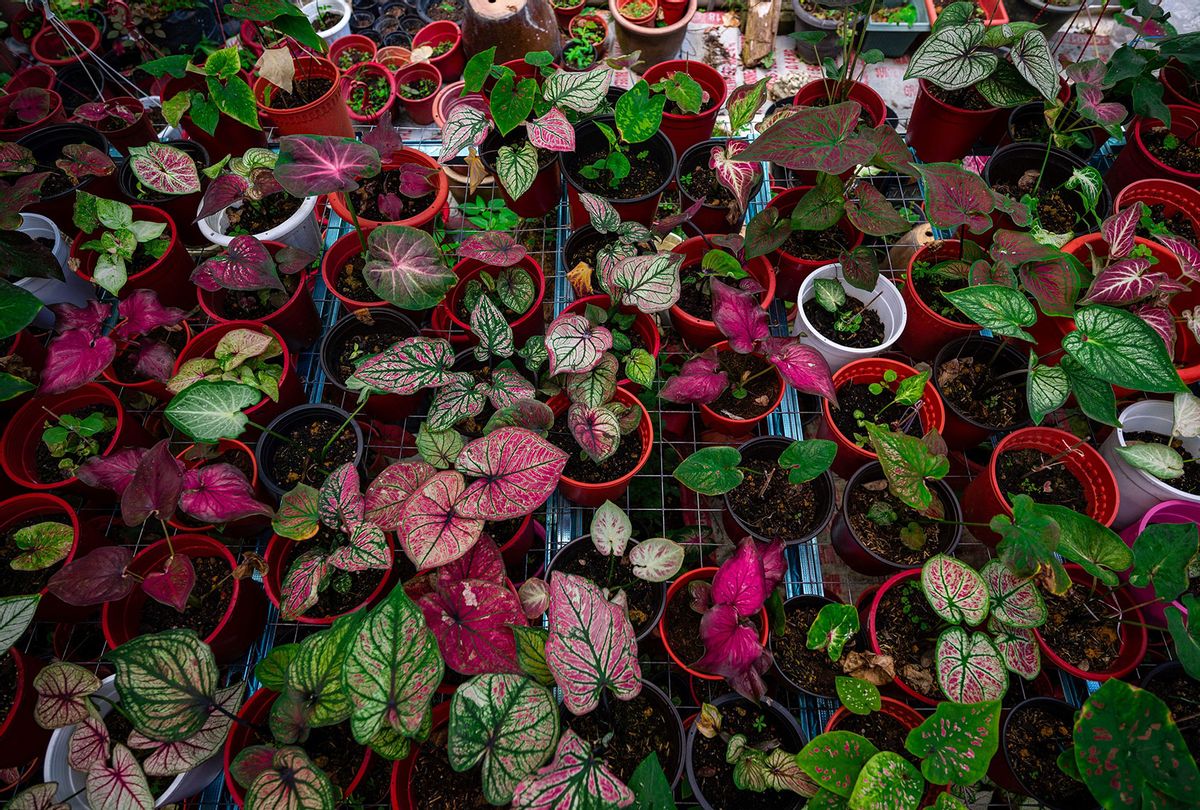I was just minding my own business, scrolling through Instagram, when I came across a video of plant care tips that "everyone should know." Naturally, I watched it to see if I was following said tips, and in addition to basic things like using pots with drainage holes and "quarantining" new plants to avoid bug infestations, one of the suggestions was to bottom-water your plants.
Now, I've always bottom-watered my African violets because . . . OK, I'm not sure why exactly, but my mom told me to. However, I don't do it with any other plants. Curious if there were actual benefits of the practice, I went down a rabbit hole about bottom-watering, and it turns out it's highly touted and actually recommended by a lot of plant experts. Here's why.
What's all the fuss with bottom-watering?
Bottom-watering, sometimes called reverse watering, is when you place a plant in a bowl of water, allowing the soil and roots to soak water from the bottom up. (Naturally, your pot needs to have drainage holes for this to work.) People love to create time-lapses of the process — it's super satisfying to watch the water level in the bowl go down as plants drink up the liquid.
Why would you do it this way? Apparently, there are quite a few benefits to watering your plants from the bottom instead of the top. It can help plants develop strong root systems, as they'll grow downward toward the source of water, and reverse watering also ensures soil is saturated, as sometimes water runs right through the pot when you top-water. It's also a great option for houseplants that don't like having wet leaves, such as African violets and snake plants. (So that's why . . .) Some people even say it can help prevent pesky insects like fungus gnats!
What do the experts think?
I'll be the first to admit that the internet occasionally misses the mark with its "life hacks," so I wanted to check in with a few experts to see if bottom-watering is really the best thing since sliced bread. The verdict? Yup, it's a great option for your plants!
"Sometimes the roots do not get enough water when watering the top of the soil, which is why the occasional bottom-soaking can be beneficial," explains Joyce Mast, official Plant Mom at Bloomscape.
"[Bottom-watering] is great because some soils don't absorb water as well if you don't give them more time to get saturated," says Mark Grundy, a houseplant consultant and owner of Moss & Fern. "It's also great because the water doesn't make it up to the top of the soil, and since fungus gnats like to lay their eggs in moist soil, they have nowhere to lay them, therefore preventing pests."
However, Grundy does point out that reverse watering takes longer than traditional watering methods, so you might not be able to do it all the time. When you do have a few extra minutes, though, bottom-watering can help keep your beloved plant babies happy and healthy! Consider me a convert.
How to bottom water your plants
If you're ready to give bottom-watering a try, it's really quite simple. Fill a bowl or saucer with room-temperature water, and mix in some fertilizer, if needed. From here, you can simply place the plant in the container and let it sit for 15 minutes or so. (Larger pots may need longer!) Don't let your plants sit in water continuously — this can lead to root rot — and keep in mind that you should occasionally top-water plants to flush out excess salts that can build up on the soil.
Having trouble figuring out when to water? After bottom-watering, note the weight of your plant — this will help you gauge the next time it needs to be watered, as it will feel much lighter when the soil is dried out.
Finally, it's worth noting that some plants do prefer top-watering — i.e. bromeliads, which have a "tank" that needs to be filled with water, and orchids with aerial roots that like moisture. However, the majority of houseplants will be very pleased to suck up water from the bottom.




Shares